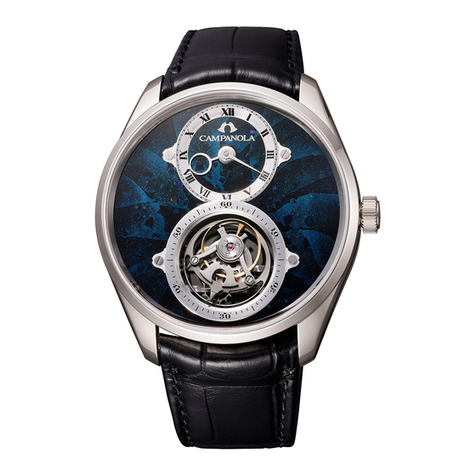
1
English
Thank you for your purchase of this Campanola watch.
Before using the watch, read this instruction manual carefully to ensure correct
use.
After reading the manual, store it in a safe place for future reference.
Visit the Citizen website (http://www.citizenwatch-global.com/) to view visual
guides for operation of your watch. Some models may be equipped with external
features (calculation scale, tachymeter, etc.). Visual guides for operation of such
external features can also be found on the website.
To check the movement number
A case number−4 alphanumeric characters and 6
or more alphanumeric characters−is engraved on
the case back. (Figure on the right)
e rst 4 characters of the case number represent
the movement number of the watch.
In the example on the right, “ △△△△ ” is the
movement number.
Engraving position example
The engraving position may dier
depending on watch model.






























